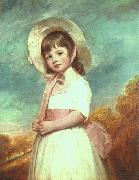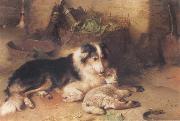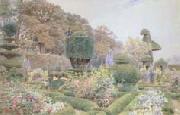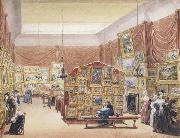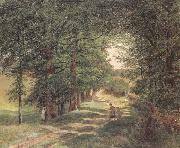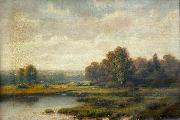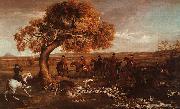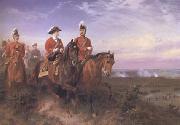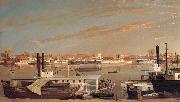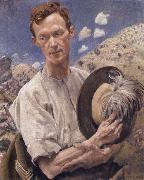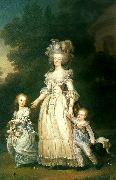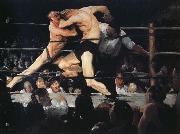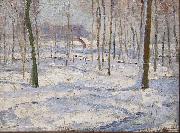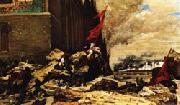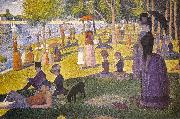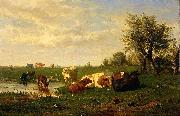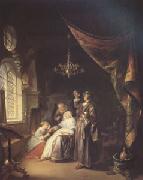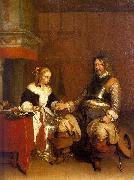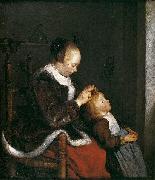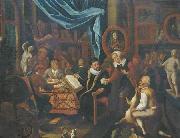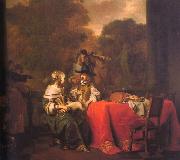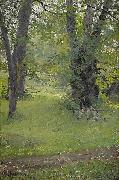|
|
|
|
|
|
|
|
|
|
|
|
|
|
|
|
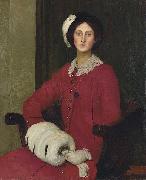 |
George Spencer Watson
|
|
R.O.I., R.P., A.R.A., R.A. (8 March 1869, London - 11 April 1934, London) was an English portrait artist of the late romantic school who sometimes worked in the style of the Italian Renaissance. He studied at the RA Schools from 1889, exhibited at the Royal Academy from 1891. He won Royal Academy Schools Silver Medals in 1889 and 1891, and the Landseer Scholarship in 1892. He was elected R.O.I. in 1900, R.P. in 1904, A.R.A. in 1923, and a Member of the Royal Academy (R.A.) in 1932.
He married Hilda, a dancer and mime artist, and follower of the actor Edward Gordon Craig. They had a daughter, Mary Spencer Watson (1913 - 2006), who became a sculptor. In 1923 he bought Dunshay Manor in the hills of the Isle of Purbeck, after already have spent holidays in Swanage.
He died in London and a memorial exhibition was held at the Fine Art Society in the same year. There is a memorial to him in the north vestibule of St James's Church, Piccadilly, London.
Some of his works are held at Tate Britain, the Harris Art Gallery, Preston and collections in Bournemouth, Liverpool, Plymouth and the National Gallery of Canada. Born in London, Watson studied at the Royal Academy from 1889; he exhibited there from 1891 and also at the Paris salon. Retrospective exhibitions were held at the Galerie Heinemann, Munich in 1912, and at the Fine Art Society in 1914. His work A Lady in Black (1922) is owned by the Tate Collection.
|
|
|
|
|
|
|
|
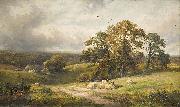 |
George Turner
|
|
1750-1843.
Turner was born in Cromford, Derbyshire in England, but then moved to Derby with his family. He showed an early talent for music and art - encouraged by his father Thomas Turner, who although a tailor by profession was also an art enthusiast. Turner was largely self-taught and went on to become a professional painter and art teacher.
A quiet scene in Derbyshire (1885)Turner lived in Derbyshire all his life. In 1865 he married Eliza Lakin (1837 - 1900), becoming a part-time farmer and raising four children at Walnut farm in Barrow upon Trent.[1] After Eliza's death in 1900, he moved to Kirk Ireton and later married fellow artist Kate Stevens Smith (1871-1964) - they set up home in Idridgehay where he died in 1910. His son William Lakin Turner (1867-1929) also became a landscape oil painter of repute.
Turner worked in oils and painted bucolic scenes mainly of his native Derbyshire, leaving an important legacy of hundreds of pictures depicting the English countryside before the coming of mechanisation, the motor car and urban expansion. His work was exhibited in Nottingham and Birmingham. Turner served on the Art Committee of Derby Art Gallery and both his and his son's paintings are included in the city's collection. |
|
|
|
|
|
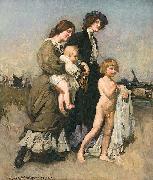 |
George Washington Lambert
|
|
(13 September 1873 - 29 May 1930) was an Australian artist, known principally for portrait paintings and as a war artist during the First World War.
Lambert was born in St Petersburg, Russia, the posthumous son of George Washington Lambert (1833 - 25 July 1873, in London) of Baltimore, Maryland. The younger Lambert's mother was Annie Matilda, nee Firth, an Englishwoman. Mother and son soon moved to Werttemberg, Germany, to be with Lambert's maternal grandfather. Lambert was educated at Kingston College, Yeovil, Somerset. The family, consisting of Lambert, his mother and three sisters, decided to emigrate to Australia. They arrived in Sydney aboard the Bengal on 20 January 1887. |
|
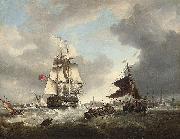 |
George Webster
|
|
Please search for George Webster (painter) in Wikipedia to check for alternative titles or spellings. |
|
|
|
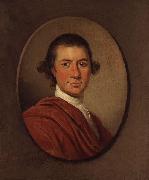 |
George Willison
|
|
Portrait painter who was born in Edinburgh in 1741 and returned there to spend his retirement.
He was a pupil of Mengs in Rome, before Mengs left for Madrid in 1761.
He painted "Boswell" in Rome in 1765 which is now in the Scottish National Portrait Gallery.
Willison was in London from 1767 and exhibited at the Scottish Academy between 1767 - 1770, and at the Royal Academy in 1771 and 1772.
He left London for an opulent retirement in Edinburgh around 1784.
|
|
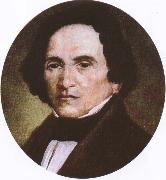 |
georges bizet
|
|
Born: Oct 25, 1838 in Paris, France
Died: Jun 03, 1875 in Bougival, France
Active: '30s, '50s, '70s-2000s
Major Genres: Music, Theater
Career Highlights: Carmen, Carmen Jones, Carmen
First Major Screen Credit: The Burlesque on Carmen (1916)
|
|
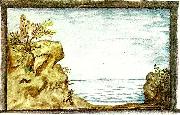 |
georges braque
|
|
Georges Braque (13 May 1882 --31 August 1963) was a major 20th century French painter and sculptor who, along with Pablo Picasso, developed the art movement known as Cubism. |
|
|
|
|
|
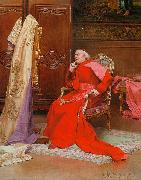 |
Georges Croegaert
|
|
1848-1923) was a Belgian academic painter. He was born in Antwerp, Belgium in 1848, and spent most of his life in Paris. Croegaert is associated with both classicism and anti-clerical art.
|
|
|
|
|
|
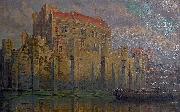 |
Georges Jansoone
|
|
George Jamesone (or Jameson) (c. 1587-1644) was Scotland's first eminent portrait-painter.
He was born in Aberdeen, where his father, Andrew Jamesone, was a stonemason. Jamesone attended the grammar school near his home on Schoolhill and is thought to have gone on to further education at Marischal College. Legend has it that Jamesone once studied under Rubens in Antwerp with Anthony van Dyck. However, this is yet to be proven as his name does not appear to be noted in the Guild registers of the town. However, considering that Rubens was exempt from registering pupils; this does not mean that the painter definitely did not study there. Jamesone certainly did complete an apprenticeship under the supervision of his uncle, John Anderson, who was a popular decorative painter in Edinburgh at the beginning of the seventeenth century. Jamesone finished this training in 1618. He is not recorded as being in Aberdeen again until 1620. If the Scotsman had gone to Antwerp, it would have had to have been between the years of 1618 to 1620. |
|
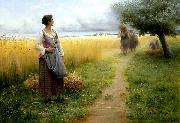 |
Georges Laugee
|
|
Georges Laugee was born in Montivilliers on December 19, 1853. His father, Desire Laugee, was an important French Realist artist; a contemporary of Jules Breton and specialized in portraying the workers in the field. Georges received his early training with his father and then, like many artists of his time, continued his studies at le Ecole des Beaux-Arts. There he studied at the ateliers of Isidore Pils and Henri Lehmann where he mastered the art of life studies and sketching.
In 1877 he made his debut at the Paris Salon and in 1881 was awarded the bronze medal for his Salon entries of that year: En Octobre and Pauvre aveugle. Following his love of nature and the farm worker, Laugee focused on scenes of everyday life. His works, often featuring the peasants tending their animals or working in the fields, are filled with light and realism.
Among the works that Georges chose to exhibit at the Paris Salons were; his 1890 submissions Le Repos and Le Retour des Champs; 1897 submission Sous leaverse (In the Storm) and his 1904 works Deux Amies and Au Temps des bles murs, which portrayed peasant girls in the country. At the Salon of 1906 he exhibited Soleil Couchant (Sunset) and Heure doree (Golden Hour) and continued to exhibit works of similar subject matter through 1928.
In 1889 he participated in the Exposition Universelle, where he received a bronze medal and in the Exposition Universelle of 1900 was awarded the silver medal for his painting entitled Au printemps de la vie (In the Springtime). From 1907 -- 1909 Laugee was a Membre du Comite de la Societe des Artistes Français and was a member of the Jury at the Salon from 1908 -- 1910.
Laugee painting entitled The Favorite. exhibited at the Paris Salon of 1891 and a very similar composition to Bergere et Mouton (featured below) - was illustrated in Famous Paintings of the World, published in 1894. The accompanying caption reads as follows:
In every family, however impartial the parents try to feel, there is always one child for whom, could she bring herself to confess it, the mother has a place in her heart a little warmer than she keeps for any other. The little shepherdess in this charming picture is exemplifying this universal truth of human nature, in her quiet encouragement of the approaches of the favorite lamb of her little flock. This is the pet lamb that she helps over all the stony places, and with which she shares even her own frugal meal. It is a simple story the artist has chosen to tell; but he has set it in a scene of tender and idyllic beauty, thoroughly appropriate to the gentle theme of affection he has selected for the central thought. He has contrasted effectively the simplicity of the shaded hillside nook, speckled with daisies and peopled with the inoffensive flock, and the ripe, full glory of the day, resplendent in the high-banked clouds, and reflected from the still surface of the breezeless summer lake. The photograph reproduction of this canvas has very successfully preserved the painty qualities of the original, so completely transferring to the engraving the technique of the artist that it is impossible that this should be anything other than what it is -- a direct engraving from a masterly painting in oil colors.
Laugee first atelier, located at 20, boulevard Flandrin, Paris, was also the home of the great realist artist Julien Dupre brother-in-law) and just after Dupre death in 1910, Laugee moved to 23, boulevard Lannes. By 1923 he had relocated to 123, Rue de la Tour; where it appears that he remained for the rest of his life. |
|
|
|
|
|
|
|
georges rouault
|
|
georges rouault(1871 to 1958),French painter, draughtsman and printmaker. Although he first came to prominence with works displayed in 1905 at the Salon d Automne in Paris, in the company of paintings by Henri Matisse and other initiators of Fauvism, he established a highly personal and emotive style. His technique and palette were also highly personal, and they ranged from watercolour blues to a rich, thick application of materials. These demonstrate, in their very complexity, not only originality but also the craft of the artist always in search of a greater form of expression. Even though he never stopped observing mankind, his deep religious feeling allowed him to imbue his work with great spirituality.
|
|
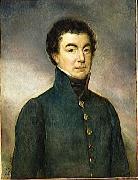 |
Georges Rouget
|
|
Georges Rouget (1781, Paris - 1869, Paris) was a neoclassical French painter.
After studying in the ? - ole des beaux-arts, Rouget entered David's studio in 1797 and rapidly became his favourite student. Rouget began his professional career as his master's main assistant until David's exile to Brussels, collaborating with him on the canvases Bonaparte at the Grand-Saint-Bernard, The Coronation of Napoleon (of which he made a copy signed by David), Leonidas at Thermopylae and on one of the three copies of the Portrait of Pope Pius VII. Though winning the second prize in the prix de Rome contest in 1803, he failed three times to win the first prize. He produced many canvases for the First French Empire and the Bonapartes, such as The Marriage of Napoleon and Marie Louise in 1811. A minor painter, he spent his whole career producing paintings of great moments in French history for whatever regime was in power at the time. Many of his paintings adorned the musee de Versailles opened by Louis-Philippe in 1837. |
|
|
|
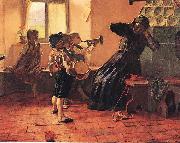 |
Georgios Jakobides
|
|
Lesbos 11 January 1853 - Athens 13 December 1932) was a Greek painter and one of the main representatives of the Greek artistic movement of the Munich School. He founded and was the first curator of the National Gallery of Greece in Athens.
His first education was in Izmir, Turkey. From 1870 to 1876 Jakobides studied sculpture and painting at the Athens School of Fine Arts, and in 1877 he went to the Akademie der Bildenden Kenste in Munich on a scholarship to continue his painting studies under Karl Theodor von Piloty. In Munich he lived for 17 years where he worked in his studio, painting mythological scenes, genre pictures, and portraits. His work is influenced by German academic Realism, his most famous paintings were of children. In the capital of Bavaria he was regarded as a successful German artist selling many of his works at high prices. The Greek government invited him in 1900 to return to Athens to organize the National Gallery of Athens, and in 1904 he was appointed Director of the Athens School of Fine Arts where he taught for 25 years. At this time, additional to his themes he produced formal portraits of eminent Greeks (e.g.Queen Sophia). He opposed all new artistic tendencies, including Impressionism and Expressionism, but supported younger artists to follow their own individual artistic tendencies.
He was given awards at five international exhibhits: among those in Berlin 1891 and in Paris 1900. |
|
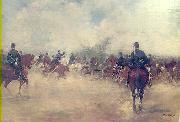 |
Georgios Roilos
|
|
1867 - 1927.
The Homeric Phthia of the Mycenaean period, capital of the Kingdom of the Myrmidons and of Peleus, father of Achilles, has sometimes been identified with the later city of Farsalos, now Pharsala. A Cyclopean Wall which protected a city still exists today near modern Pharsala, as does a vaulted tomb from that period. |
|
|
|
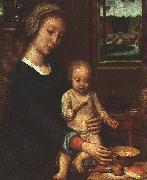 |
Gerard David
|
|
b.c. 1460, Oudewater, Neth.
d.Aug. 13, 1523, Bruges
Flemish
Gerard David Locations |
|
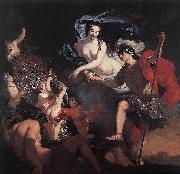 |
Gerard de Lairesse
|
|
Gerard or Gerard de Lairesse (11 September 1640 or 1641 - June 1711) was a Dutch Golden Age painter and art theorist.
Lairesse was born in Liege. His broad range of talent included music, poetry, and the theatre. He was perhaps the most celebrated Dutch painter in the period following the death of Rembrandt. His treatises on painting and drawing, Grondlegginge der teekenkonst (1701) and Groot Schilderboek (1707), were highly influential on 18th-Century painters like Jacob de Wit. Students of De Lairesse included the painter Jan van Mieris. He died in Amsterdam. |
|
|
|
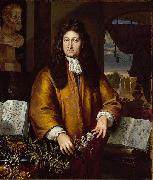 |
Gerard Hoet
|
|
(1648 - 1733), was a Dutch Golden Age painter.
Gerard Hoet trained with his father and brother who were glass painters, and Warnard van Rijsen, who lived in Zaltbommel, and who himself was a pupil of Cornelis van Poelenburgh in Utrecht. In 1672 Hoet moved to The Hague, but when the Count of Salis bought paintings at his mother's house in Zaltbommel, he returned to paint for him. He accompanied him to Rees, Germany, where he met the Utrecht painters Jan van Bunnik, Justus Nieuwpoort and Andries de Wit.With De Wit he returned to Utrecht, where he worked for Frederick Nassau de Zuylestein briefly before visiting the Hague and Amsterdam. He then travelled to France on the promise of a Marquis who wanted to give him a commission, but this promise falling through, he made some engravings of paintings by Francisque Millet.He then wanted to travel to England, but having written to his compatriot Lucas Vorsterman, he received word that there was more work to be had in Paris. Hoet travelled to Paris where he spent more than a year, before returning to the Netherlands via Brussels.In Brussels he met the painter Adriaen Frans Boudewyns, who convinced him to stay a while. After eight months, Hoet returned to Utrecht, where he worked for William Nassau de Zuylestein, 1st Earl of Rochford. He married and settled in Heemstede (Utrecht), where he found work for the lord of the castle there |
|
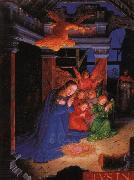 |
Gerard Hornebout
|
|
Flemish Northern Renaissance Painter and Manuscript Illuminator, ca.1465-1541 |
|
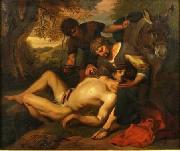 |
Gerard Seghers
|
|
(Antwerp, 1591-18 March 1651), also Zegers, was a Flemish Baroque painter and one of the leading Caravaggisti in the Southern Netherlands.
He was the son of an innkeeper but not related to the jesuit and painter Daniel Seghers. He was possibly a student of either Abraham Janssens or Hendrick van Balen, and he showed great talent, because in 1608 aged only 17 he is listed as a master in the Guild of St. Luke. It was during his trip to Italy around 1613 that he came under the influence of Caravaggio's followers. Bartolomeo Manfredi, in particular, was influential. Many other Dutch and Flemish painters were working in the style there, such as Gerard Honthorst, which is strongly characterized half-length figures illuminated by strong lighting and dramatic chiaroscuro. One work from this period is his Judith with the Head of Holofernes in the Galleria Nazionale d'Arte Antica, Rome. Caravaggism, both in history and monumental genre paintings, continued to mark Seghers's works when he returned to Antwerp around 1620.
The Patient Job, National Gallery, Prague.He married on his return to Antwerp (ca.1621) with Catharina Wouters (d.1656), with whom he had eleven children. His son Jan-Baptist Seghers (1624-1670) also became a painter. After 1630, his palette lightens up considerably and the influence of Peter Paul Rubens is noticeable in paintings like the Adoration of the Magi (1630) in the Church of Our Lady, Bruges.
|
|
|
|
|
|
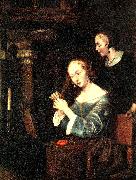 |
gerard terborch
|
|
Gerard ter Borch (or Terburg) (December 1617 ?C 8 December 1681) was a Dutch genre painter, who lived in the Dutch Golden Age.
Gerard ter Borch was born in December 1617 in Zwolle in the province of Overijssel in the Dutch Republic.
He received an excellent education from his father, also an artist, and developed his talent very early. The inscription on a study of a head proves that Ter Borch was at Amsterdam in 1632, where he studied possibly under Willem Cornelisz Duyster or Pieter Codde. Duyster's influence can be traced in a picture bearing the date 1638, in the lonides Bequest (Victoria and Albert Museum). In 1634 he studied under Pieter de Molijn in Haarlem. A record of this Haarlem period is the Consultation (1635) at the Berlin Gallery.
In 1635 he was in London, and subsequently he travelled in Germany, France, Spain and Italy. It is certain that he was in Rome in 1641, when he painted the small portraits on copper of Jan Six and A Young Lady (Six Collection, Amsterdam). In 1648 he was at M??nster during the meeting of the congress which ratified the treaty of peace between the Spaniards and the Dutch, and executed his celebrated little picture, painted upon copper, of the assembled plenipotentiaries--a work which, along with the a portrait of a Man Standing, now represents the master in the national collection in London. The picture was bought by the marquess of Hertford at the Demidoff sale for 1280, and presented to the National Gallery by Sir Richard Wallace, at the suggestion of his secretary, Sir John Murray Scott.
At this time Ter Borch was invited to visit Madrid, where he received employment and the honour of knighthood from Philip IV, but, in consequence of an intrigue, it is said, he was obliged to return to the Netherlands. He seems to have resided for a time in Haarlem; but he finally settled in Deventer, where he became a member of the town council, as which he appears in the portrait now in the gallery of the Hague. He died at Deventer in 1681.
Ter Borch is excellent as a portrait painter, but still greater as a painter of genre subjects. He depicts with admirable truth the life of the wealthy and cultured classes of his time, and his work is free from any touch of the grossness which finds so large a place in Dutch art.[not specific enough to verify] His figures are well drawn and expressive in attitude; his colouring is clear and rich, but his best skill lies in his unequalled rendering of texture in draperies, which is seen to advantage in such pictures as The Letter and in The Gallant Conversation engraved by Wille ?C which exists in various repetitions at Berlin and Amsterdam, and in the Bridgewater Gallery.
Ter Borch's works are comparatively rare; only about eighty have been catalogued. Six of these are at the Hermitage, six at the Berlin Museum, five at the Louvre; four at the Dresden Museum, and two at the Wallace Collection.
The artist's painting The Suitor's Visit, c. 1658, oil on canvas, 80 x 75 cm (31½ ?? 29 9/16 in.) in the Andrew W. Mellon Collection, was used on the cover of Marilyn Stokstad's second edition of Art History
|
|
|
|
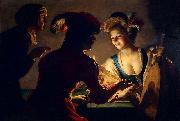 |
Gerard van Honthorst
|
|
(November 4, 1592 - April 27, 1656), also known as Gerrit van Honthorst and Gherardo della Notte, was a Dutch painter of Utrecht. He was brought up at the school of Abraham Bloemaert, who exchanged the style of the Franckens for that of the pseudo-Italians at the beginning of the 16th century.
Margareta Maria de Roodere and Her Parents by Gerrit van Honthorst (1652) Oil on canvas, 140 x 170 cm. Centraal Museum, UtrechtInfected thus early with a mania which came to be very general in the Netherlands, Honthorst went to Italy in 1616, where he copied the naturalism and eccentricities of Michelangelo da Caravaggio. Home again about 1620, after acquiring a considerable practice in Rome, he set up a school at Utrecht which flourished exceedingly. Together with his colleague Hendrick ter Brugghen, he represented the so-called Dutch Caravaggisti. In 1623 he was president of his gild at Utrecht, where he had married his cousin. He soon became so fashionable that Sir Dudley Carleton, then English envoy at The Hague, recommended his works to the earl of Arundel and Lord Dorchester. In 1626 he received a visit from Rubens, whom he painted as the honest man sought for and found by Diogenes. |
|
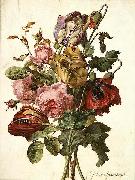 |
Gerard van Spaendonck
|
|
(22 March 1746 - 11 May 1822) was a Dutch painter.
Gerard was born in Tilburg, an older brother of Cornelis van Spaendonck (1756-1840), who was also a renowned artist. In the 1760s he studied with decorative painter Willem Jacob Herreyns (also known as Guillaume-Jacques Herreyns) (1743-1827) in Antwerp. In 1769 he moved to Paris, and in 1774 was appointed miniature painter in the court of Louis XVI. In 1780 he succeeded Madeleine Françoise Basseporte (1701-1780) as professor of floral painting at the Jardin des Plantes, and shortly afterwards was elected a member of the Academie des beaux-arts.
Gerard van Spaendonck painted with both oil and watercolors. He contributed over fifty works to the Velins du Roi, which was a famous collection of botanical watercolors possessed by French royalty. From 1799 to 1801 he published twenty-four plates of his Fleurs Dessinees d'apres Nature (Flowers Drawn from Life), which were high-quality engravings for students of floral painting. Today, Fleurs Dessinees d'apres Nature is a highly treasured book on floral art.
In 1788 Spaendonck was appointed adviser to the Academie, and in 1795 he became a founding member of the Institut de France. In 1804 he received the Legion d'honneur and soon afterwards was ennobled by Napoleon Bonaparte. He died in Paris.
|
|
|
|
|
|
|
|
|







